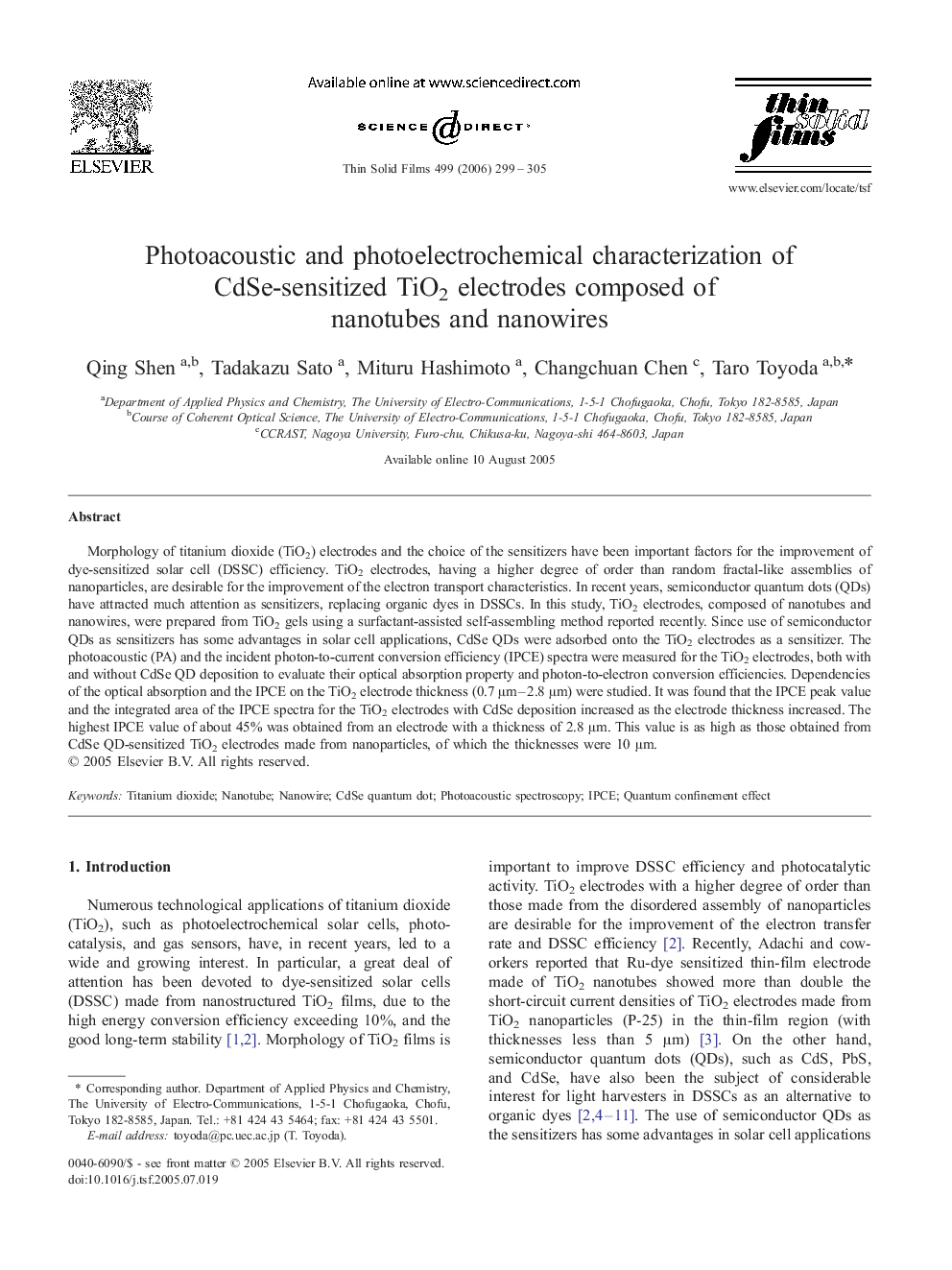| Article ID | Journal | Published Year | Pages | File Type |
|---|---|---|---|---|
| 1676543 | Thin Solid Films | 2006 | 7 Pages |
Morphology of titanium dioxide (TiO2) electrodes and the choice of the sensitizers have been important factors for the improvement of dye-sensitized solar cell (DSSC) efficiency. TiO2 electrodes, having a higher degree of order than random fractal-like assemblies of nanoparticles, are desirable for the improvement of the electron transport characteristics. In recent years, semiconductor quantum dots (QDs) have attracted much attention as sensitizers, replacing organic dyes in DSSCs. In this study, TiO2 electrodes, composed of nanotubes and nanowires, were prepared from TiO2 gels using a surfactant-assisted self-assembling method reported recently. Since use of semiconductor QDs as sensitizers has some advantages in solar cell applications, CdSe QDs were adsorbed onto the TiO2 electrodes as a sensitizer. The photoacoustic (PA) and the incident photon-to-current conversion efficiency (IPCE) spectra were measured for the TiO2 electrodes, both with and without CdSe QD deposition to evaluate their optical absorption property and photon-to-electron conversion efficiencies. Dependencies of the optical absorption and the IPCE on the TiO2 electrode thickness (0.7 μm–2.8 μm) were studied. It was found that the IPCE peak value and the integrated area of the IPCE spectra for the TiO2 electrodes with CdSe deposition increased as the electrode thickness increased. The highest IPCE value of about 45% was obtained from an electrode with a thickness of 2.8 μm. This value is as high as those obtained from CdSe QD-sensitized TiO2 electrodes made from nanoparticles, of which the thicknesses were 10 μm.
